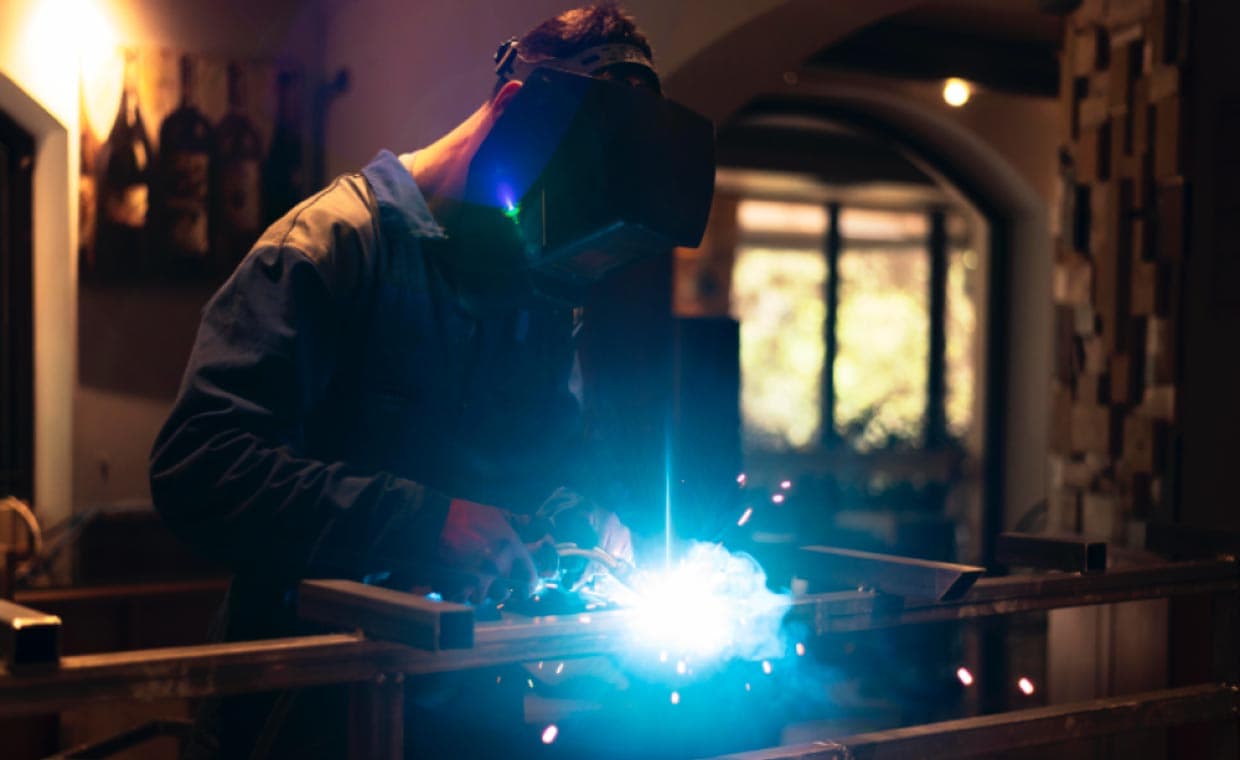
Table of Contents
Ever stared at a broken gate or a shaky backyard grill and thought, “Surely I can fix that… if only I knew how to weld?” Well, don’t worry, friend, you’re not alone! Welding isn’t just for industrial factories or car repair shops. With the right approach, it can be the perfect ally for your home improvement projects. From fixing a steel fence to crafting some stylish metal furniture, mastering basic welding techniques can change everything.
Today, you walk through some practical welding techniques ideal for residential metalwork. By the end, you’ll know when (and why) to break out the MIG over the TIG, and maybe even surprise yourself with how fun melting metal can be.
What Welding Techniques Work Best for Home Projects?
Welding for residential metalwork often involves smaller, more precise tasks – think furniture-making or repairs – that don’t necessarily need the heavy-duty approaches used in industries.
That said, not all welding methods are created equal. Here are three welding techniques that’ll light up your home projects in more ways than one.
01. MIG Welding

MIG welding, short for Metal Inert Gas welding, is like the smooth talker of the welding world – everyone loves it! It’s perfect for beginners since it’s simple, clean, and quick.
You feed a continuous wire into the welding gun, hit the trigger, and voilà – the electrical current heats things up and melts the wire to bond metals.
This technique works well for thin sheets of steel or aluminum, making it ideal for smaller home projects like patching up a bike frame or creating lightweight decor.
Pro Tip: Because of its simplicity, MIG welding is your go-to for quick fixes. But don’t forget to work indoors or in a wind-free zone; otherwise, the shielding gas protecting your weld will disappear faster than your internet connection during a storm.
02. TIG Welding

If MIG is your handy multi-tool, TIG is the exquisite precision knife. TIG welding requires patience and skill, but it’s precision can make even the toughest projects look like a work of art.
Want seamless, clean welds? Need to repair thin metals like stainless steel without a single burn mark? TIG has got your back.
This technique is ideal for tasks like creating custom light fixtures or fixing those delicate metal railings that love to grab onto your sweaters. A word of warning, though – TIG can take time, much like baking soufflé. But trust me, the final look? Chef’s kiss!
Pro Tip: Keep both hands engaged – one for the torch and one for the filler rod. Multi-tasking much? Absolutely. Rewarding? You bet!
03. Stick Welding

For those grueling outdoor jobs – like mending a wrought iron gate or fixing a rusty bench – Stick Welding is your sturdy companion.
Not always pretty, but it’s dependable. This method uses a flux-coated electrode, making it excellent for joining heavy, thick metals. It’s also a champ at working in less-than-ideal conditions, like the middle of your backyard with the wind messing up your hair.
While it might not give you the smoothest finish, it’s perfect for functional metalwork where strength trumps aesthetics.
Pro Tip: Stick welding requires proper ventilation because it spits out more fumes. Welding a gate outside? Great. Welding in your basement? Not so much.
Going from Novice to Professional
If you’re serious about mastering welding, consider formal training. The Combination Welding program at STVT is an excellent option.
With hands-on learning and expert guidance, you’ll explore techniques like MIG, TIG, and beyond – all tailored for real-world applications. Plus, programs like these often emphasize safety, which, trust me, is not something to skimp on when wielding a torch.
When To Choose What

Now, you might ask, “Which method should I choose?” Well, here’s a quick cheat sheet to help you decode the mystery of welding methods depending on your project goals.
- MIG Welding: Best for general repairs and light fabrication, like patching a fence or piecing together a metal plant stand.
- TIG Welding: Call in TIG for precision-perfect projects with thin metals or intricate designs, such as decorative metalwork or custom light frames.
- Stick Welding: Rugged jobs that require durability and strength under harsh conditions – perfect for outdoor fixtures like metal gates or grills.
Master these techniques to expand your expertise and tackle any metalworking challenge with confidence, creativity, and professional flair.
Craft Your Next Metal Masterpiece
Welding isn’t magic – it’s a skill.
And like any skill, practice makes progress. Whether you’re fixing a squeaky garden gate or building an ambitious steel sculpture, understanding these different welding techniques will equip you for anything. Plus, there’s unparalleled joy in proudly saying, “I welded that.”
Dive into metalwork today. With the techniques above, all that stands between you and your next great project is the sound of metal melting into shape.
Also Read: How to Repair Rusted Railing of Your Home?






























